 Your new post is loading...
 Your new post is loading...
It’s a wait and see moment for wrist-worn devices. After a few years of betting heavily on the space, this most recent CES didn’t offer much; save for two or three smartwatch announcements, some partnerships and a couple of middling bands, the industry seems to have largely shifted its focus toward the connected home and the seemingly attainable dream of sticking Alexa in everything. Some of the hesitation on the part of manufacturers no doubt owes much to the delay of Android Wear 2.0 — which really couldn’t have come at a less opportune time, missing both the holiday rush and the biggest tech show of the year. The latest version of Google’s wearable operating system is due out next month — likely February 2. When it arrives, it’ll greet an industry licking its wounds. The disappointing CES was really par for the course following a fairly lackluster — and in some cases toxic — 2016....
RIP Pebble… The wearable maker that pioneered wrist-based notifications before Apple and many others waded into the smartwatch space has confirmed it’s closing its doors as an independent entity.
Late last month rumors emerged that Fitbit was set to acquire Pebble — with our sources telling us the price-tag was between $34 million and $40M, a figure they said “barely” covered the startup’s debts. Although the company avoided an explicit confirmation of the rumor by tweeting a shrug emoji until now.
Today Pebble’s CEO Eric Migicovsky has published a blog with official confirmation of the acquisition and details of what will happen to Pebble products. The post does not confirm the acquisition price, however....
But features and functionality are not the only thing that’s important to internet users—price is almost as important. In fact, more respondents said that price was an important factor in a smart watch than quality, style or even brand. When it comes to how much they would be willing to spend on a smart watch, 45% of females said they would spend less than $100 on watches, while 30% of men said they would spend the same amount. More men are willing to spend bigger on a smart watch, though: 23% said they would spend more than $300, vs. just 11% of women. According to eMarketer, usage of wearables, like smart watches, will grow by nearly two-thirds this year. But cost is still holding many consumers back from purchasing a device. Research from Kentico, an ecommerce and online marketing platform, found that 69% of internet users worldwide said that cost was one of the top reasons for not purchasing a smart watch. And more than a third said that there were just not enough reasons to use it....
When it comes to the future of computing, there is one major known and a principal unknown.
The known, with almost guaranteed certainty, is that the next era of computing will be wearables. The unknown, with commensurate guaranteed uncertainty, is what these wearables will be and where on your body they will live.
Apple and Samsung, for example, are betting on the wrist; Google, the face. A slew of tech companies believe clothing will simply become electronic. Yet there’s a whole new segment of start-ups that believe all of the above are destined for failure and that we humans will become the actual computers, or at least the place where the technology will reside.
Their enthusiasm is on an emerging class of wearable computers that adhere to the skin like temporary tattoos, or attach to the body like an old-fashioned Band-Aid.
This skin patch monitors the alcohol levels of the wearer accurately enough to be used by police when testing potential drunk drivers. But law enforcement isn’t its only use. An individual could choose to wear their own patch and have it send wireless updates of their blood alcohol levels to their smartphone.
The sensor, which comes from the University of California San Diego, comprises two parts. The first is a temporary tattoo that sticks to the skin and delivers a drug, pilocarpine, to induce sweating. The tattoo also contains detectors that are highly sensitive to ethanol in the generated sweat.
The user then applies the electronic part over the top of the tattoo, which stays in place using magnets. This controls the sensing operation, as well as transmitting the raw data over Bluetooth to a waiting device, most likely a smartphone....
Amazon Prime day is here, giving shoppers yet another day (Cyber Monday, Black Friday, Ruby Tuesday*) to hunt for bargains online.
If you’re not a Prime member already – there’s a 30 day free trial on offer, so there’s no need to miss out.
Here are 5 of the top wearable tech deals we’ve found and, don’t worry, we’ve checked that these are genuine bargains and not just reductions on hiked up prices in the lead up to the big sale day…
Nearly 250 years later, in a world defined by technological change, we see the same fears and concerns. As of September 2015, Amazon had 30,000 Kiva robots automating its warehouses, increasing efficiency and reducing the need for pick-and-pack labor. And at the same time, demand for software developers continues to rise, as Marc Andreessen’s famous 2011 statement that “software is eating the world” becomes ever more true.
Over the next decade, we’ll see this pattern play out once more in the nascent Internet of Things (IoT). With an industry defined by “bringing physical things online,” many IoT business models are predicated on improving efficiency by eliminating labor. We see companies connecting garbage cans to the internet to improve the efficiency of deploying waste collectors — which means we’ll need fewer waste collectors. Drones are dramatically reducing the time it takes to survey a plot of land — which means we’ll need fewer surveyors. Every industry that involves electronics or equipment can expect to be disrupted in this way over the next 10 years.
So the same question that was asked in the late 1700s remains: Will this new technology eliminate jobs? No....
Sony is looking into creating a contact lens that acts as a digital camera, according to a recent patent application filed by the company. The contact lens can capture still images or video using embedded sensors and camera components.
To take a picture, all you have to do is blink. The device would be able to detect the difference between unconscious and conscious blinking, allowing a person to control the device by purposefully opening and shutting their eye.
The unit would be powered by the movement of the eye, and even allow for advanced camera adjustments like aperture and shutter speed. After the images are captured, they can be transferred to an external device like a smartphone.
Eyes have become a hot "next frontier" in technology.
The failed Google Glass was just one of many stabs at face-mounted computers. Microsoft (MSFT, Tech30) and other companies are working on augmented reality headsets, which overlay computer imagery onto the real world. Other companies, such as Sony and Facebook's (FB, Tech30) Oculus, are working on completely immersive virtual reality goggles....
Wearable brands are recognizing that in order to sell products and build loyalty, the device needs to provide real-time, meaningful value that improves people’s lives on a daily and consistent basis.
Delivering meaningful information starts with personalization and monitoring behavior in order to provide relevant notifications, stats and content. The foundation of this personalization is precise location and the context it provides.
Here are 5 forward-looking devices that are getting it right....
At this stage in the adoption of wearable technology in enterprise, we’re all hungry for use cases to inspire and teach us. While news articles and press releases provide us with a taste of which companies are openly experimenting with wearables and the basic applications, they are by no means complete case studies.
BrainXchange recently wrote a white paper in collaboration with Hewlett Packard Enterprise examining several real-life use cases of wearables at work in different enterprise operations. These examples were gathered from HPE’s work with its real enterprise customers, and are presented in the paper – beyond the mere facts of each use case – to give you real, valuable insight into the pain points faced by today’s enterprises and how wearable solutions like HPE’s MyRoom/VRG platform are making a big difference.
Our newest blog series – of which this is Part 1 – will give you early access to the white paper content before it is made available for free download in its entirety on Wednesday, May 18th. (Sign up here to receive the paper directly in your inbox once it goes live.) Each week for six weeks, we will publish one use case from the paper. So read on to see how an advanced collaboration platform coupled with wearable technology can revolutionize remote support and eLearning for a major automotive company, and keep reading EnterpriseWear for more pre-releases and exclusive content!...
Fashion designers like to look ahead, predicting the colors, prints, and silhouettes that will be in demand a year or two later. Becca McCharen aims much farther into the future, conceiving of designs that question how apparel can do more than simply "clothe" a person. She calls her fashion brand Chromat "structural experiments for the body."
"Coming from an architectural background, I see clothing as doing work for the body—an additional tool to enhance performance," she says.
For her AW16 collection—dubbed Lumina—the self-described "mad scientist" used Intel's Curie module (a button-sized wearable) and StretchSense's flexible sensors—which she likens to "rubber bands as Bluetooth"—to create a tech-infused collection that glows in response to movement....
The next several years will continue to see double-digit growth in the number of Americans using wearable devices, according to eMarketer's first wearables forecast. In 2015, 39.5 million US adults 18 and over will use wearables, including smartwatches and fitness trackers. That's a jump of 57.7% over 2014. While penetration among US adults is just 16.0% this year,
eMarketer expects that to double by 2018, to 81.7 million users.eMarketer defines wearable users as those who wear accessories or clothing at least once per month that are embedded with internet-connected electronics and exchange data with a manufacturer or other connected device....
Wearables are one of the most exciting developments in technology, and have inspired the fashion industry in some intriguing ways. But there’s still plenty of skepticism about everything from battery life to appearance. Some even wonder if computers strapped to our bodies 24/7 could have adverse health effects (although, to be fair, it’s hard to see how wearables would be any different from an iPhone in that regard).
TO PUT IT BLUNTLY, WEARABLES ARE STILL UGLY.
Wearables are taking time to gather momentum. Google Glass was disbanded, and Apple hasn't disclosed how many watches it is selling. Even if sales are stronger than analysts estimate, the Watch hasn't exactly gotten glowing reviews. Even the most favorable reviews suggest it is not a device for "tech novices." Walt Mossberg at Re/Code went further, dubbing one wearable a "celibacy band."
If the people who test gadgets for a living are having trouble adapting, it’s safe to say we still have a few years before wearables will be relevant to typical consumers, much less those who care about looking stylish....
|
Don’t expect to see too many wearable devices like Apple Watches and Fitbits under Christmas trees this year—they’re not on many wish lists.eMarketer has significantly revised its estimates of wearable-device users in the US. The still-young category showed early promise, but usage has not expanded beyond early adopters. In October 2015, eMarketer expected usage among US adults to grow more than 60% this year. But according to its latest forecast, it will only grow 24.7%, as smart watches in particular have failed to impress consumers. This year, 39.5 million US adults will use a wearable device (with internet connectivity) at least once a month, far less than the 63.7 million previously forecast. Smart watches haven’t caught on in large numbers, primarily because of their high price point and lack of definitive use case. This year, usage of wearables will reach just 15.8% of the population. That penetration rate is only expected to grow to 21.1% by 2020....
Health tech startup Cardiogram has raised $2 million in a seed round led by the a16z Bio Fund for an app that screens users’ cardio health and gives them help improving or maintaining it.
The company started out with an Apple Watch integrated app, initially. But it is ultimately planning to be a “device agnostic” business, and to make its app utilizable with all manner of wearables such as Android Wear watches, or various fitness bands and activity trackers from the likes of Fitbit or Garmin.
In addition to the seed funding round, Cardiogram today unveiled what it’s calling “an app store for habits,” in which it features apps for guided meditation, or physical and mental health exercises, which the startup believes will help its users improve or maintain good heart health....
London-based Vinaya is dedicated to creating what cofounder Kate Unsworth, a 28-year-old musician and former tech management consultant, calls "conscious technology for the mindful generation." The design firm’s chic wearables fit right in at luxury and fashion-forward retailers. Two more buzzed-about products are due to launch next year: AltruisX, a collection of rings, necklaces, and bracelets that filter mobile alerts and track smartphone usage, and Zenta, a "biometric" wearable that monitors the user’s physical and emotional well-being. And several designer collaborations are in the works....
Wearables continue their streak with yet another increase in the number of health and fitness trackers hitting the market.
Fitbit continues to lead the field, having shipped 4 million fitness trackers just in the second quarter of this year, according to a new report.
Total shipments of basic bands, comprising mainly health and fitness trackers, passed 9 million units in the last quarter, according to Canalys.
Following Fitbit is Chinese maker Xiaomi, having sent 3 million devices into the market last quarter, followed by Garmin at 700,000 devices.
Meanwhile, wearable-maker Jawbone has attempted to sell its wearable business, according to a report in The Information, though Jawbone said the story is false. Shipments of their devices didn’t even register in the report.
The future of wearables will see convergence.
This was a general consensuses from a panel of agency executives at the MediaPost IoT Marketing Forum this week.
“Wearables can add another layer of context to data,” said Marley Kaplan, who heads innovation at Kinetic Worldwide.
Chad Vavra, experience strategy and design director at Isobar, suggested that wearables will undergo a convergence and ultimately land on products that can track, monitor and sense multiple types of metrics. Vavra also said the key value for consumers will be in aggregating the data into a dashboard specifically tailored for the individual user.
Vavra pointed to the fact that he used to wear multiple different fitness trackers, but ultimately moved to a single smartwatch, which can deliver more all-around functionality.
A distinction was drawn between wearables and sensors.
Believe it or not, today’s Tech World isn’t the first time Lenovo has shown off a pair of smart sneakers. Just about this time last year, the company revealed a pair of kicks with the unique ability to determine and display their wearer’s mood. How the concept wearable actually worked and why anyone might possibly want to do such a thing weren’t entirely clear, but hey, look, a happy face.
It’s not likely to get as much notice as the new Project Tango handset Lenovo showed off at today’s press event, but the company’s latest take on connected sneakers does appear to be a fair bit more subdued than the product it showed off last year.
We’re still awaiting specifics, but the smart shoes seem to have the sort of fitness data collection one would expect from such a wearable, tracking users’ distance and calories, etc. There‘s also some gaming functionality built into the product — motion tracking, perhaps? — along with LEDs embedded in the soles.
According to two new reports, Jawbone is having some major problems.
According to Tech Insider, the company has stopped making its Up fitness tracker. Additionally, the company has sold-off its remaining inventory at a discount to a reseller.
When reached for comment, a Jawbone spokesperson told Mashable that it “wasn’t commenting on the speculations made in the reports today but we can say with certainty that we are not selling our fitness tracker business.”
That statement isn’t necessarily at odds with Tech Insider’s report. It’s very possible Jawbone is planning to restart production later (if it has indeed stopped). It could also be selling off older inventory in the lead-up to release a new device. It’s been more than a year since the last flagship Up device was released.
Fortune also reported that Jawbone is trying to sell-off its speaker business. The company might be best known for its fitness trackers, but it got its start selling phone headsets and, later, Bluetooth speakers.
While many companies, big and small, have been jumping into the wearables space in recent years, the use-cases for these devices often feels superficial — with fitness perhaps the most compelling scenario at this nascent stage. Yet smartwatches have far richer potential than merely performing a spot of sweat tracking.
The other problem with the current crop of smartwatches is the experience of using apps on wrist-mounted devices does not always live up to the promise of getting stuff done faster or more efficiently. Just having to load an app on this type of supplementary device can feel like an imposition.
If the primary selling point of a smartwatch is really convenience/glanceability the watch wearer really does not want to have to be squinting at lots of tiny icons and manually loading data to get the function they need in a given moment. A wearable needs to be a whole lot smarter to make it worth the wearing vs just using a smartphone.
At the same time, other connected devices populating the growing Internet of Things can feel pretty dumb right now — given the interface demands they also place on users. Such as, for example, connected lightbulbs like Philips Hue that require the user to open an app on their phone just in order to turn a lightbulb on or off, or change the colour of the light.
Which is pretty much the opposite of convenient, and why we’ve already seen startups trying to fix the problems IoT devices are creating via sensor-powered automation....
Welcome to Part 2 of our latest blog series giving you early access to the upcoming BrainXchange-Hewlett Packard Enterprise white paper, which examines several real-life use cases of wearables at work in different enterprise operations. In Part 1, we shared an example of how an advanced collaboration platform like HPE’s MyRoom/VRG coupled with wearable technology could revolutionize the automotive recall process for a major auto manufacturer. Today we will see how a heavy machinery manufacturer could use wearables to provide remote support and on-the-spot training to its partners and customers. The complete white paper will be available for free download on May 18th. Sign up today to receive the white paper directly in your inbox when it goes live.
Wearable Internet-connected devices are shipping by the millions, with a focus on fitness leading the way. More global year-end numbers just came out showing that the wearables market grew 127% in the last quarter compared to the same quarter a year ago. And the numbers are impressive. During the holiday quarter, 27 million wearables shipped, according to the Worldwide Quarterly Device Tracker by IDC, which I consider to be one of the best and most accurate research and tracking companies. For the full year, suppliers shipped 78 million wearable devices, an increase of 172% from the year before....
The wearables market is just starting to explode, but we're already taking it for granted. And it's hard not to wonder where it will go next – especially considering where we've been....
Usage of wearables, like smart watches, will grow by nearly two-thirds this year, per an eMarketer forecast. Still, cost is holding many consumers back from purchasing a device, according to December 2015 research.
Kentico surveyed 1,000 internet users, ages 18 and older. More than two-thirds of internet users worldwide said that cost was one of the top reasons for not purchasing a smart watch.
Additionally, 38% of respondents said that another reason for not purchasing a smart watch was because there was not enough reasons to use it. This is likely because many smart watch capabilities, like sending and receiving emails or texts, as well as placing and receiving phone and video calls, can be done via a smartphone. In fact, 14% of internet users said they were dependent on their smartphone, and that was a reason for not purchasing a smart watch....
|



 Your new post is loading...
Your new post is loading...



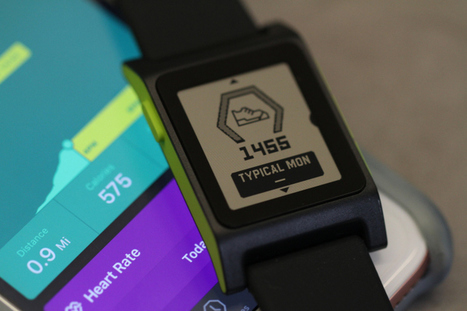

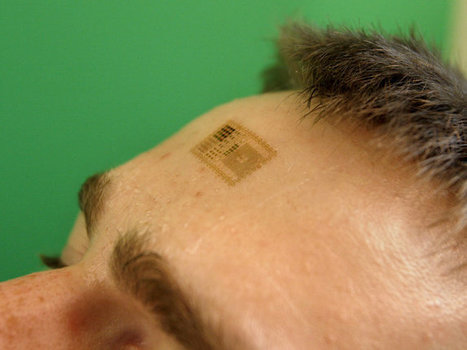
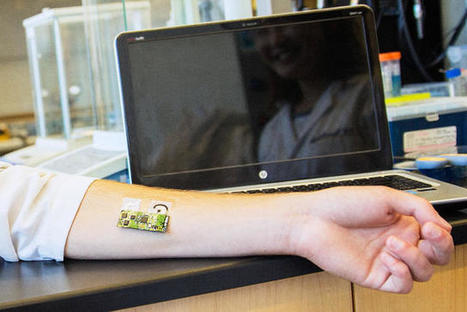
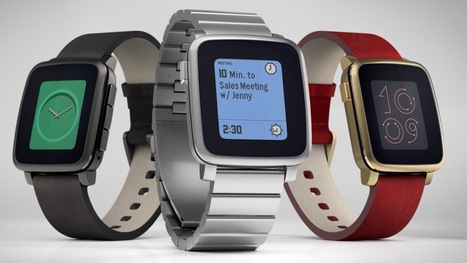


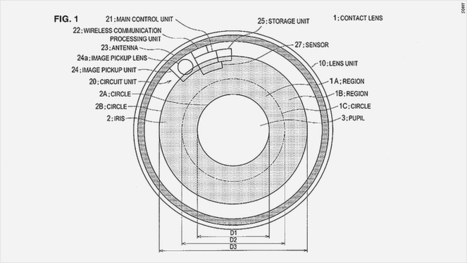



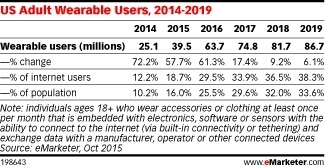


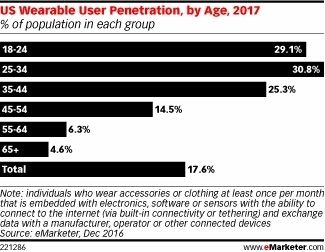
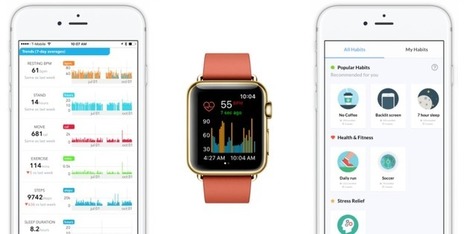

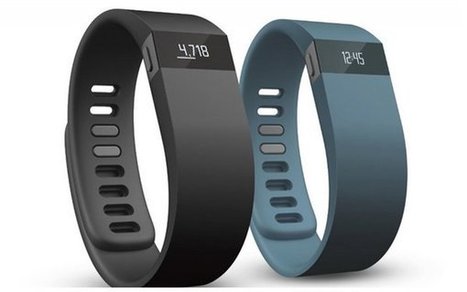
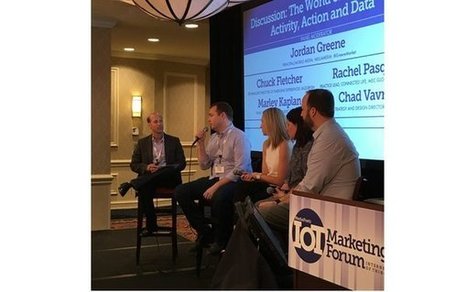
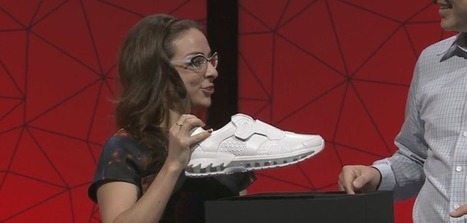
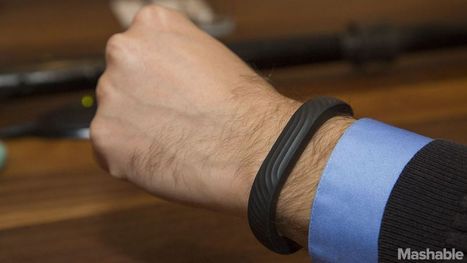


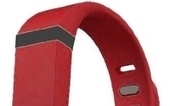







Wherefore wearables? Seems to be wait-and-see according to the experts.